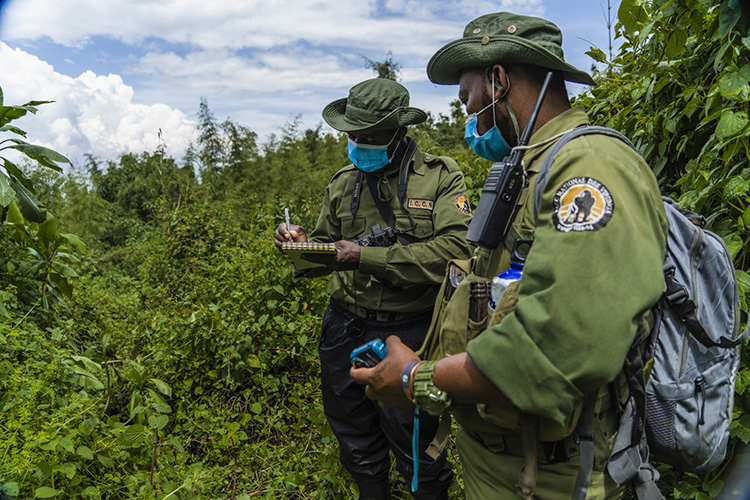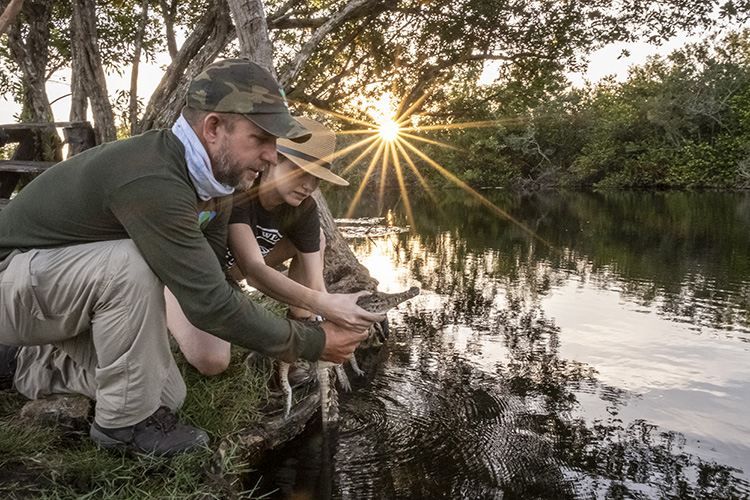April 24, 2024
PROVINCETOWN – Ten Atlantic white-sided dolphins were released off Provincetown Tuesday night after stranding on the mud flats in Wellfleet.
A team from the International Fund for Animal Welfare Marine Mammal Rescue, volunteers and AmeriCorps Cape Cod members, about 45 in all, responded after receiving a report of 11 dolphins stranded in Wellfleet Tuesday afternoon before the early evening low tide.
Eight dolphins were found off the Wellfleet pier in Duck Creek. Three others were stranded near the mouth of the Herring River. This area of the river, referred to as "the gut," is a frequent stranding location due to extreme tidal fluctuations and shallow slopes. One dolphin died on scene.
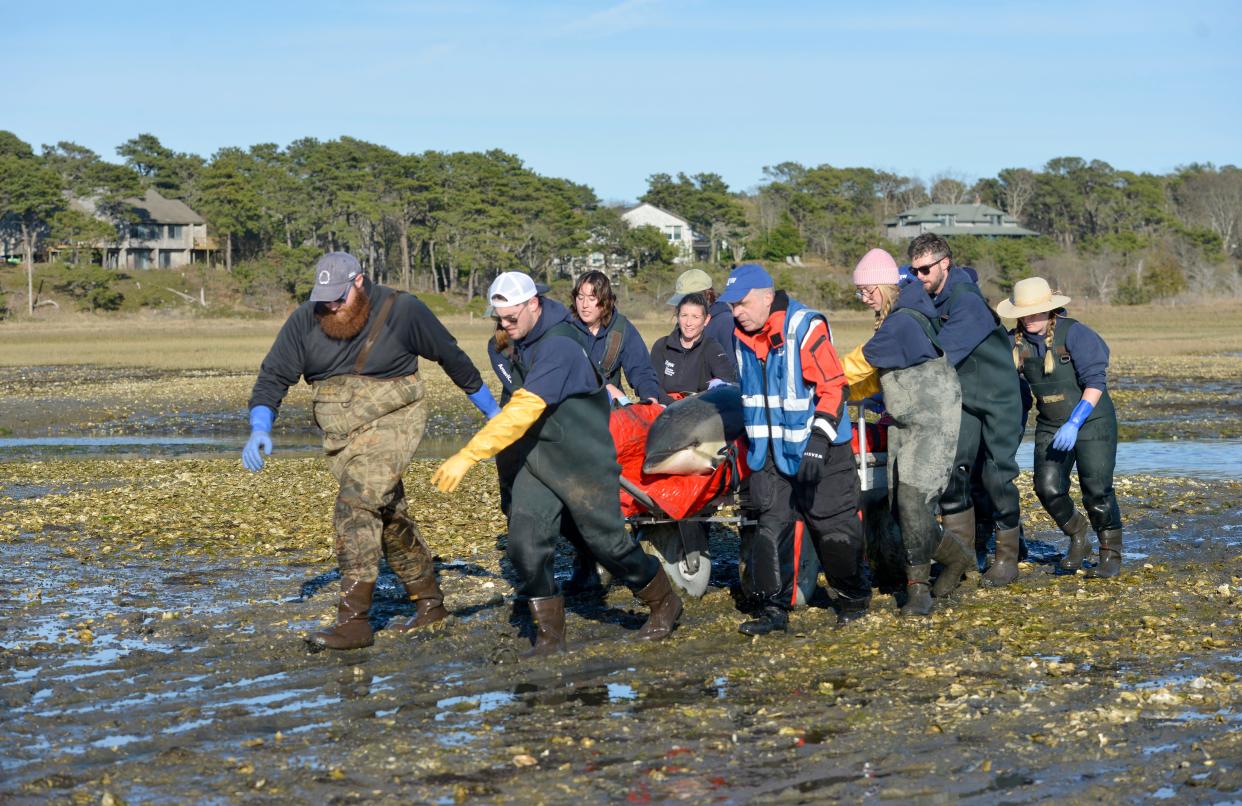
A dolphin is transported off the Wellfleet mud flats after stranding Tuesday. Rescuers responded to a mass dolphin stranding in Wellfleet Tuesday afternoon. Eleven Atlantic white-sided dolphins were found stranded on the outgoing tide. Eight were found in the Duck Creek area and another three were stranded at "the gut," an area near the entrance to the Herring River. Ten of the dolphins were transported to Herring Cove Beach in Provincetown where they were released. One dolphin died. International Fund for Animal Welfare's Marine Mammal Rescue and Research team responded to the mass dolphin stranding as did volunteers and members of AmeriCorps Cape Cod.More
Rescuers were met with harsh conditions at both locations with thick muddy flats and pockets of water that they had to navigate as the tide continued to roll out. In Provincetown, rescuers added head lamps to their gear to help illuminate the way as they walked down to Herring Cove Beach pushing the dolphin carts along the sandy path to where they would released.
Over seven hours, the rescuers worked to get the dolphins off the flats and into transport vehicles. Six of the dolphins were transported in IFAW’s mobile dolphin rescue clinic which allows veterinarians and other marine mammal technicians to stabilize the dolphins and perform health assessments before they are released back into deeper water.
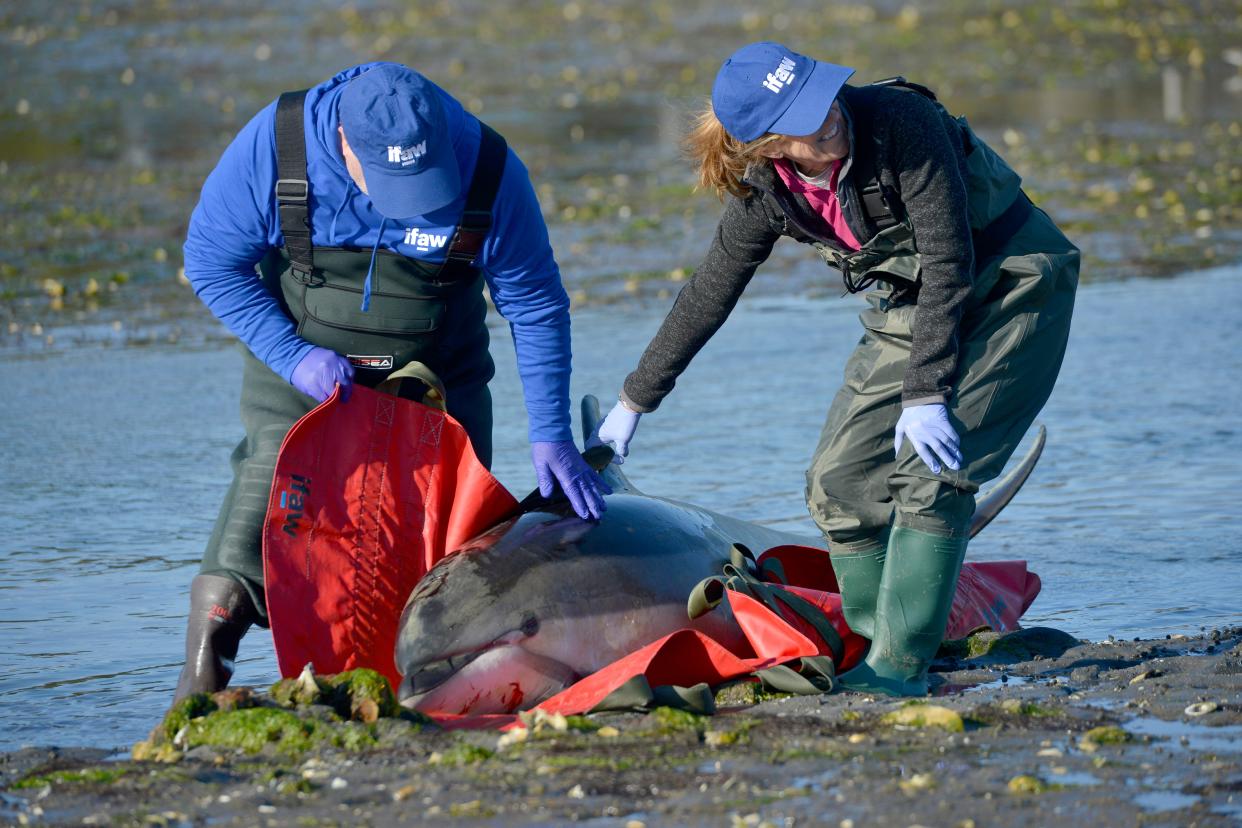
Volunteers Craig Bodamer, left, and Paula Putnam wait with a dolphin until it is transported off the flats.
“This rescue had many challenges due to the number of dolphins, the difficult mud conditions, and having to deal with two simultaneous mass strandings," said Lauren Cooley, IFAW stranding biologist, in a press release. “The team was able to overcome all of these challenges to give these dolphins their best chance at survival.”
10 dolphins released back to the wild after seven-hour rescue off Cape Cod
April 24, 2024
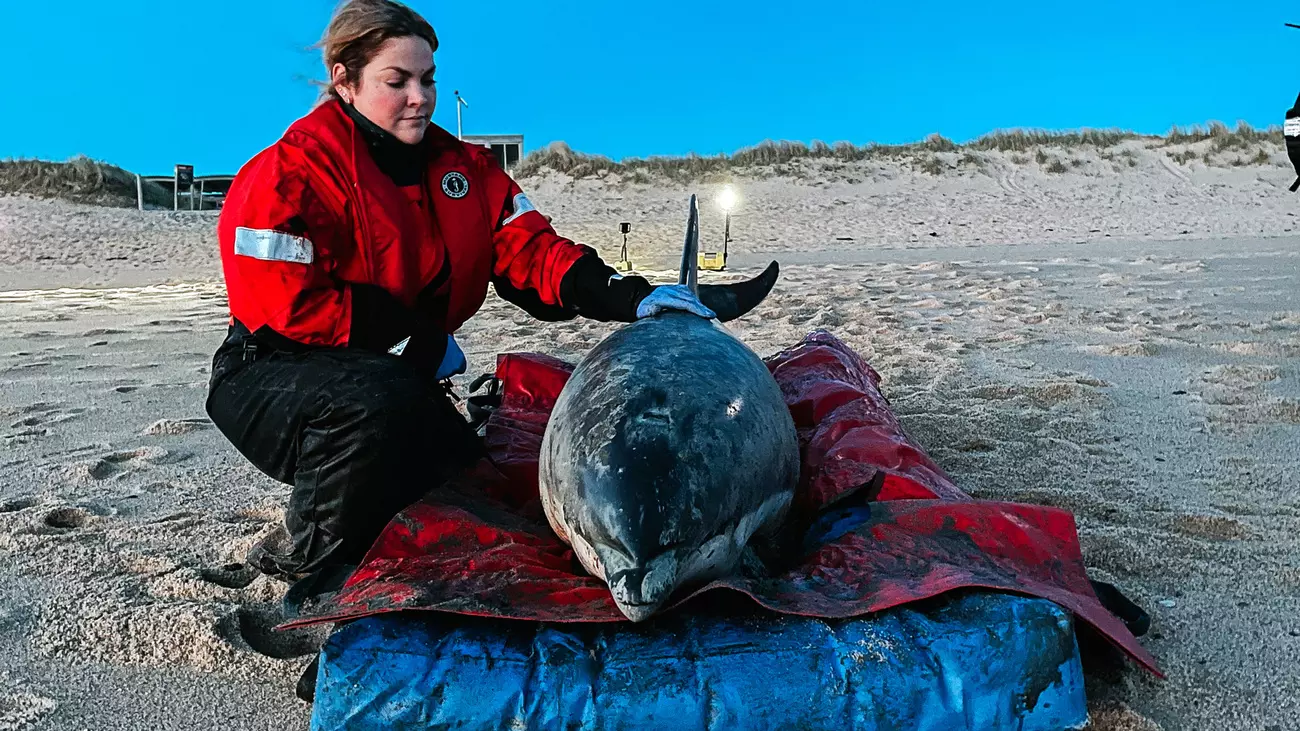
Michaela Wellman, an animal care technician with IFAW's Marine Mammal Rescue team, stays with a dolphin as another is brought down to the beach to be released. Photo: Anita Yankova / © IFAW, Activities conducted under a federal stranding agreement between IFAW and NMFS under the MMPA.
(Cape Cod, MA – April 24, 2024) – Ten dolphins were released back to the wild today following a near seven-hour stranding response in global stranding hotspot. The dolphins were rescued in a highly coordinated response effort across two mass stranding locations and released back to deeper waters, thanks to experts in the area.
Staff and volunteers from IFAW received the first report of 11 Atlantic white-sided dolphins close to shore off Wellfleet late Tuesday afternoon, three hours before low tide.
Eight dolphins were found in Duck Creek, near Wellfleet Town Pier. Three were found in a part of the Herring River known locally as “The Gut,” a frequent stranding location due to its shallow slopes, hook-like shape, and extreme tidal fluctuations. Both have incredibly harsh conditions for rescues.
“This rescue had many challenges due to the number of dolphins, the difficult mud conditions, and having to deal with two simultaneous mass strandings," said Lauren Cooley IFAW Stranding Biologist. “The team was able to overcome all of these challenges to give these dolphins their best chance at survival.”
Six of the dolphins were transported to a deeper water release site off Provincetown, MA, traveling in IFAW's mobile dolphin rescue clinic. This one-of-a-kind vehicle was custom designed to meet the needs of what is considered a global stranding hotspot on Cape Cod. The vehicle enables IFAW veterinarians and experts to perform health assessments and stabilize the dolphins while quickly reaching the best site for release.
While one animal died on scene due to trauma associated with the event, the remaining dolphins were rescued from the challenging mud and transported in a separate response vehicle for release in Provincetown. All ten dolphins were released together.
“While the dolphins suffered from stress related to the stranding, we’re very optimistic and full of hope for their return to deeper waters,” added Cooley.
The entire effort included about 45 people, including 15 AmeriCorps members and IFAW staff and volunteers.




